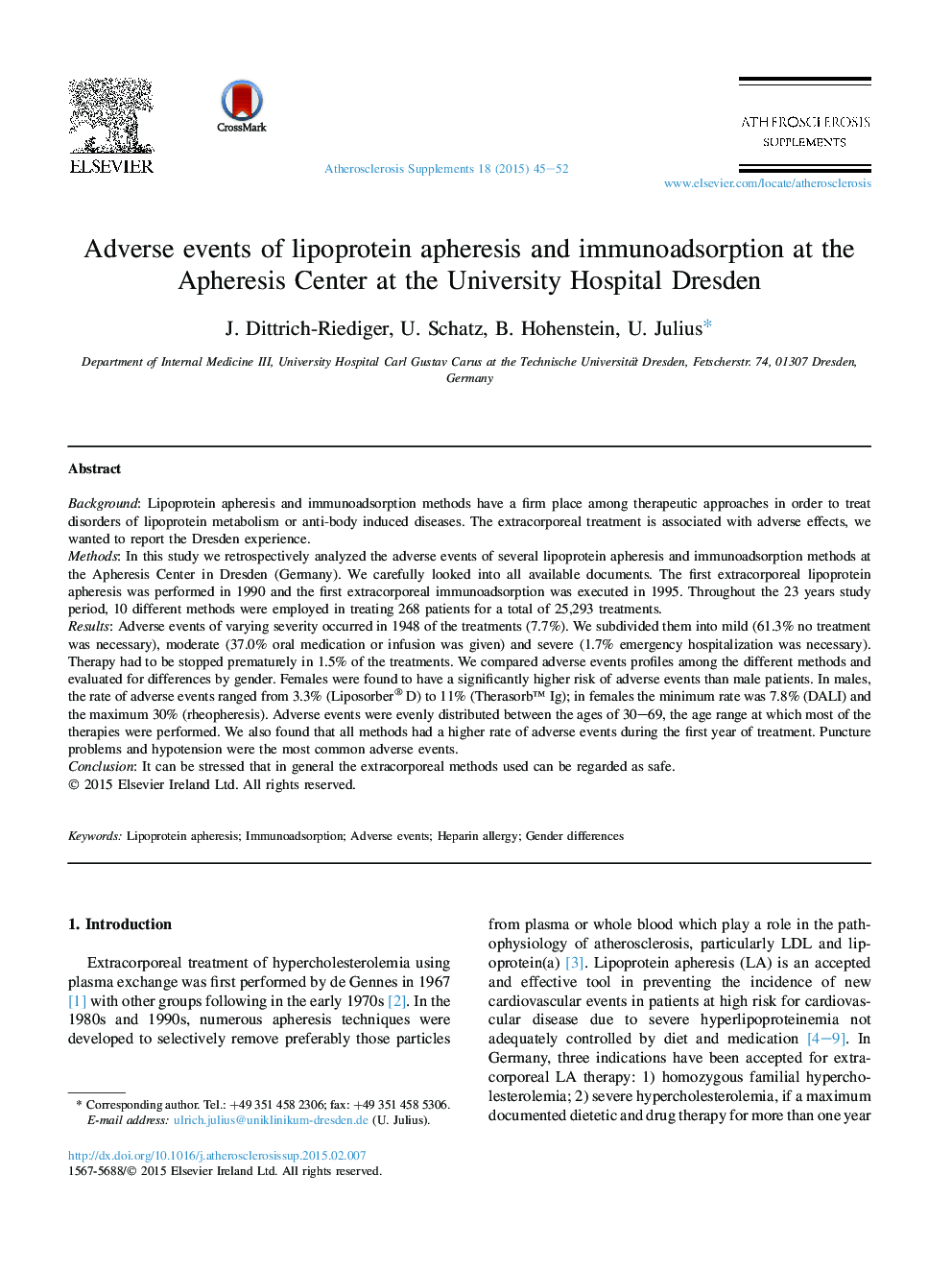| کد مقاله | کد نشریه | سال انتشار | مقاله انگلیسی | نسخه تمام متن |
|---|---|---|---|---|
| 2895450 | 1574746 | 2015 | 8 صفحه PDF | دانلود رایگان |
BackgroundLipoprotein apheresis and immunoadsorption methods have a firm place among therapeutic approaches in order to treat disorders of lipoprotein metabolism or anti-body induced diseases. The extracorporeal treatment is associated with adverse effects, we wanted to report the Dresden experience.MethodsIn this study we retrospectively analyzed the adverse events of several lipoprotein apheresis and immunoadsorption methods at the Apheresis Center in Dresden (Germany). We carefully looked into all available documents. The first extracorporeal lipoprotein apheresis was performed in 1990 and the first extracorporeal immunoadsorption was executed in 1995. Throughout the 23 years study period, 10 different methods were employed in treating 268 patients for a total of 25,293 treatments.ResultsAdverse events of varying severity occurred in 1948 of the treatments (7.7%). We subdivided them into mild (61.3% no treatment was necessary), moderate (37.0% oral medication or infusion was given) and severe (1.7% emergency hospitalization was necessary). Therapy had to be stopped prematurely in 1.5% of the treatments. We compared adverse events profiles among the different methods and evaluated for differences by gender. Females were found to have a significantly higher risk of adverse events than male patients. In males, the rate of adverse events ranged from 3.3% (Liposorber® D) to 11% (Therasorb™ Ig); in females the minimum rate was 7.8% (DALI) and the maximum 30% (rheopheresis). Adverse events were evenly distributed between the ages of 30–69, the age range at which most of the therapies were performed. We also found that all methods had a higher rate of adverse events during the first year of treatment. Puncture problems and hypotension were the most common adverse events.ConclusionIt can be stressed that in general the extracorporeal methods used can be regarded as safe.
Journal: Atherosclerosis Supplements - Volume 18, May 2015, Pages 45–52
